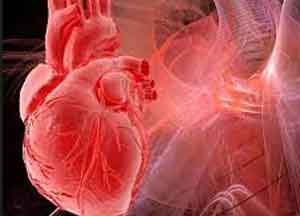- Home
- Editorial
- News
- Practice Guidelines
- Anesthesiology Guidelines
- Cancer Guidelines
- Cardiac Sciences Guidelines
- Critical Care Guidelines
- Dentistry Guidelines
- Dermatology Guidelines
- Diabetes and Endo Guidelines
- Diagnostics Guidelines
- ENT Guidelines
- Featured Practice Guidelines
- Gastroenterology Guidelines
- Geriatrics Guidelines
- Medicine Guidelines
- Nephrology Guidelines
- Neurosciences Guidelines
- Obs and Gynae Guidelines
- Ophthalmology Guidelines
- Orthopaedics Guidelines
- Paediatrics Guidelines
- Psychiatry Guidelines
- Pulmonology Guidelines
- Radiology Guidelines
- Surgery Guidelines
- Urology Guidelines
Successful implantation of heart pump with power cable behind the ear

The Cardiovascular Surgery Group at Osaka University successfully implanted a left ventricular assist device with an internal power cable tunneled through the neck to the head in a patient who was ineligible for a cardiac transplantation, destination therapy (DT) trial, a Japan first. The patient was recently discharged.
Under the system to provide medical treatment to end-stage heart failure patients, a group that is ineligible for heart transplantation, in response to their requests, Osaka University Hospital gained the nation's first approval for its use as a medical device on February 20, 2017.
A group of researchers led by Prof. Yoshiki SAWA implanted a left ventricular assist device with an internal power cable tunneled through the neck to the head in a patient with severe kidney disease who was ineligible for destination therapy (DT) for cardiac transplantation.
Thus far, patients with previous diseases such as irreversible kidney disorder were ineligible for a heart transplant or destination therapy. In addition, in Japan, the use of left ventricular assist devices was approved as just a bridge to a heart transplant and was not covered by National Health Insurance. Using this system upon request from a patient, it has become possible to treat the patient ineligible for a heart transplant or destination therapy and use this technique for tunneling the internal power cable through the neck to the head, which is approved overseas, but not in Japan.
Compared to currently approved treatment using an electrical cord connected at an abdominal site, this new method has a low risk of developing infectious diseases due to the power cable behind the ear and is anticipated to improve patients' quality of life; for example, patients with this new device can soak in a bathtub as most Japanese people do when taking a bath. This method will provide many people with difficult disease such as severe heart failure with a new option of therapy with left ventricular assist devices.

Disclaimer: This site is primarily intended for healthcare professionals. Any content/information on this website does not replace the advice of medical and/or health professionals and should not be construed as medical/diagnostic advice/endorsement or prescription. Use of this site is subject to our terms of use, privacy policy, advertisement policy. © 2020 Minerva Medical Treatment Pvt Ltd